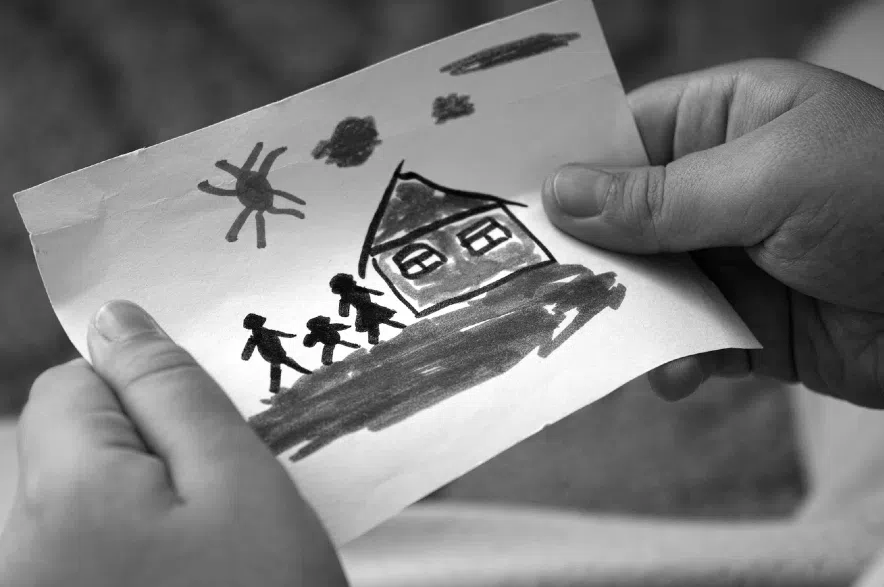The number of children experiencing homelessness in Saskatoon has increased more than 1,000 per cent, the city’s Point-in-Time Homelessness Count has revealed.
The official 2024 Point-in-Time (PiT) Homelessness Count report was released by the City of Saskatoon on Tuesday.
Read more:
- Saskatoon to explore possible 24-hour drop-in centre for homeless
- More security, renovations among changes at Saskatoon public libraries
The report showed a dramatic increase in the number of homeless children in the city, which rose to 315 in the 2024 count from 26 counted in 2022 — a jump of 1,111.54 per cent.
The count, conducted on Oct. 8, 2024, had previously identified at least 1,499 people experiencing homelessness, nearly tripling the number from 2022.
The report also emphasized that while the count is an essential tool of measuring homelessness, its purpose is to present a snapshot of people during a 24-hour period, capturing the minimum number at a specific point-in-time.
The count also does not account for people at imminent risk of homelessness or in
precarious living arrangements.
Indigenous people over-represented
The May 27 report also shows an over-representation of Indigenous people, who make up less than 12 per cent of Saskatoon’s general population but account for over 80 per cent of the homeless.
Saskatoon Tribal Council (STC) Chief Mark Arcand has previously said that be believed that 90 per cent of the homeless in the count were First Nations and the affordability crisis had played a big part in the increase.
“We see people can’t afford rent now, (under) the SIS (Saskatchewan Income Support) program, (and) the SAID (Saskatchewan Assured Income for Disability) program,” said Arcand in December 2024.
“(They can’t afford) the cost of food — we have elderly people in our EWC (Emergency Wellness Centre) that can’t afford any of those living on a fixed income.”
The report underscored Arcand’s comments by saying that evictions are the primary factor contributing to homelessness and were reported by over half of the survey respondents.
The report also points out that unlike the common colonialist definition of homelessness, Indigenous homelessness is not defined as lacking a structure of habitation but is more fully described and understood through a composite lens of Indigenous worldviews.
These include individuals, families and communities isolated from their relationships to land, water, place, family, kin, each other, animals, cultures, languages and identities, the report said.
“Importantly, Indigenous people experiencing these kinds of homelessness cannot culturally, spiritually, emotionally or physically reconnect with their Indigeneity or lost relationships.”
The report also said that one-third of respondents identified insufficient income as another major factor contributing to homelessness.
The report also highlighted that a growing number of women, youth, seniors and families were without stable housing, as well as a rise in unsheltered people sleeping in streets, parks, vacant buildings or other areas not fit for habitation, including vehicles.
In March, two Saskatoon public libraries temporarily closed their doors to the public for more than three weeks, citing staff safety concerns, the continuing homelessness crisis, and the city’s opioid overdose situation.
Mental health issues and addictions cited
Mental health and addictions were the most frequently reported health-related challenges reported, with over 80 per cent saying they had a substance abuse issue and 60 per cent indicating a mental health issue.
The report said that the responses “underscore the complexity and challenges faced by individuals experiencing homelessness.”
“Homelessness should be rare, brief and not repeated. These numbers are heartbreaking and unacceptable,” said Mayor Cynthia Block in a news release accompanying the report.
“Every person without a home is a call to action — especially when so many are Indigenous, reflecting the ongoing impacts of colonialism. Cities are on the frontlines, but we cannot do this alone.
“We need urgent, coordinated action from all orders of government and we must work in true partnership with Indigenous leadership to create lasting solutions,” she said in the release.
What is the PiT count?
The count was conducted through a collaborative effort led by the City of Saskatoon, the Saskatoon Housing Initiatives Partnership (SHIP), and the Community-University Institute for Social Research (CUISR) at the University of Saskatchewan.
Over 200 volunteers and numerous community organizations contributed to the initiative, which is part of the Government of Canada’s Reaching Home program — a national effort to better understand and address homelessness.
Using standardized national methodologies adapted to reflect local context, the PiT Count provides critical insights into demographics, service usage and the pathways that lead individuals into homelessness.
These findings can help guide the development of culturally appropriate, evidence-based policies and programs, and long-term solutions.
Read more:











